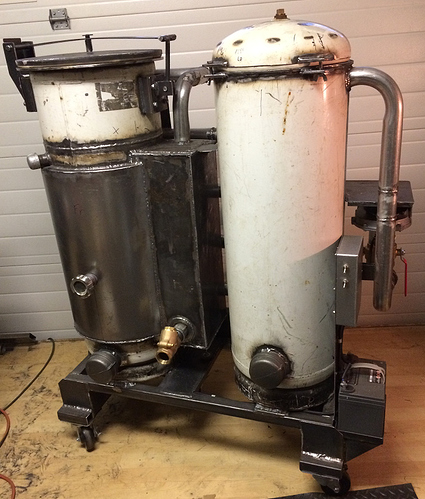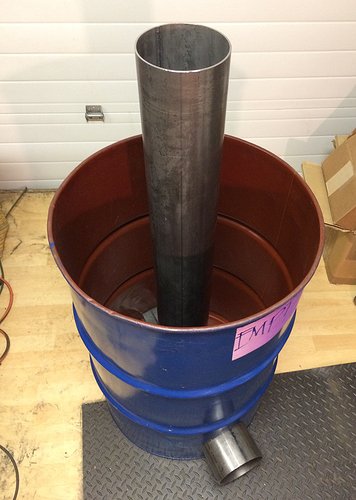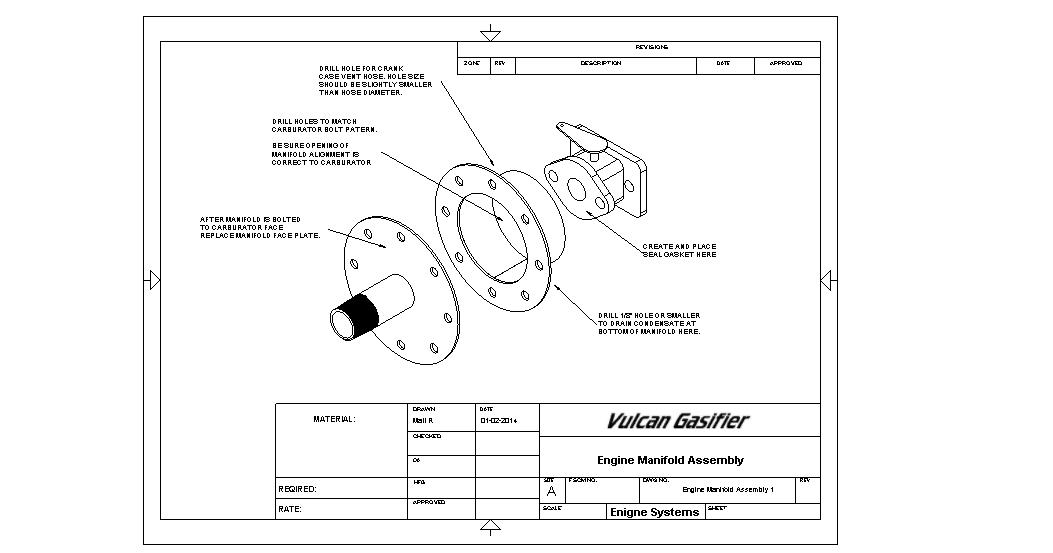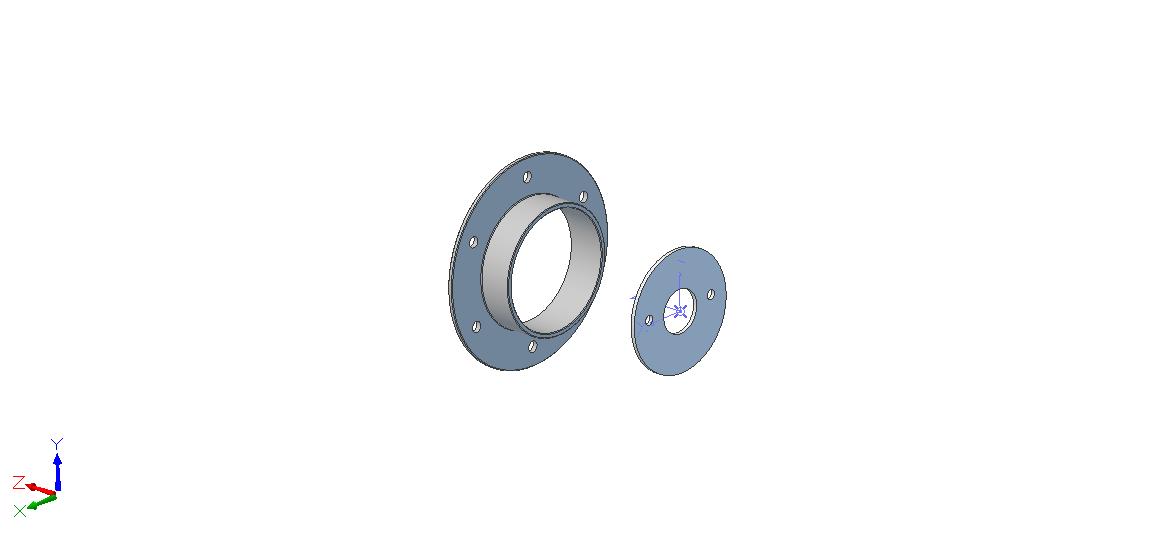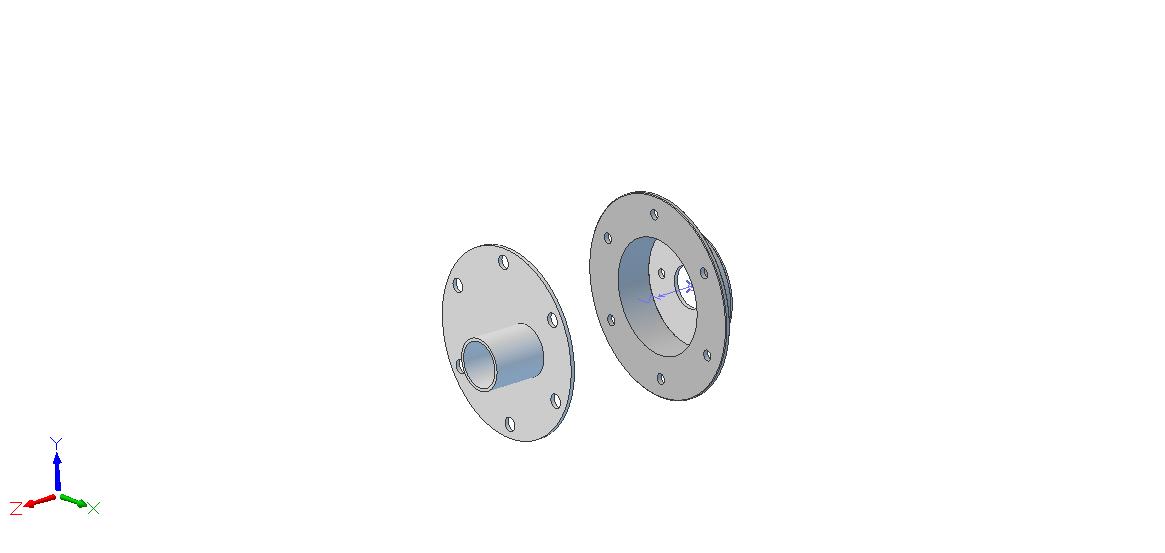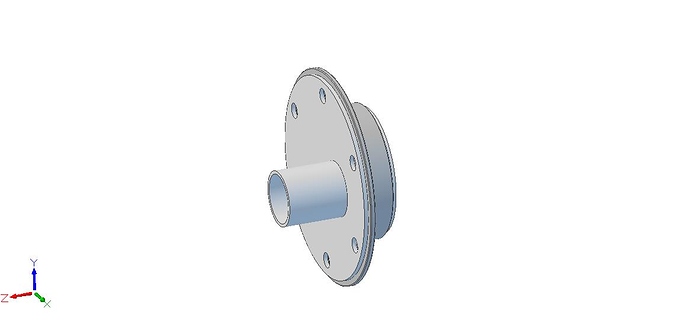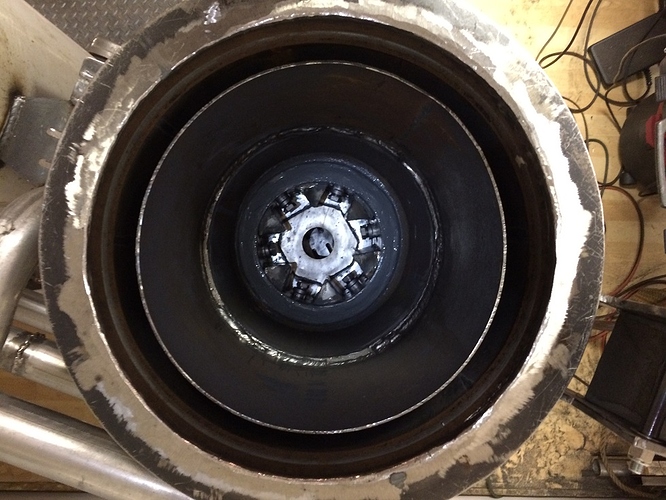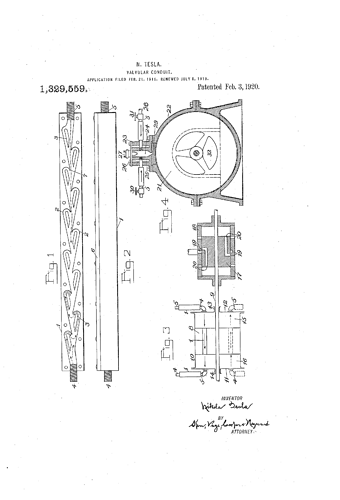I haven’t run this yet because I’m trying to figure out the best way to make charcoal for it. Any specific suggestions? I’m working on a ‘charcoal retort’ which is basically an airtight 55 gallon drum containing the wood chunks with a 6" diameter rocket stove inside it for the heat. I also need specific instructions for hooking the gasifier up to a 208cc generator.
Hi Greg, that is a very nice looking BP Gasifier you have built there. I think it is the first one I have seen built other than Ben’s personal builds. If you like having fires out in the back yard a fire pit will make nice charcoal to put in the wood gasifier for a char bed to get it started up with a clean start up burn.
If you have more pictures of your build that would be nice to look over and view.
Bob
Nice looking rocket stove retort. Consider removing the top and bottom from another barrel and slicing it vertically so that you can slide it into your retort. This will add a slight insulating effect that will improve performance. A layer of rockwool on the outside is even better. Use a fan or blow drier to get the fuel inside the rocket tube roaring hot or you will be feeding this thing for a very long time before pyrolysis starts. You should also have a moisture vent on the top to exhaust the moisture. Air dry wood still has 15-20% moisture. When you can light the gas at your moisture vent, close it to force the combustible gases down into the rocket tube to create the self-generating effect. This moisture venting can also be accomplished by letting the steam escape from the gap where the flue passes through the lid, then covering this gap when escaping gas can be ignited. If you don’t have an insulation bat to go on the lid, you can just put a thick layer of ashes on top.
Youtube link to help you identify the 14cc Honda GX160 head,
This is a bolt on part to improve the wood gas performance of your engine.
Greg that thing is absolutely beautiful!! Very nice work!!
Im looking for an illustration for a simple to make adapter; I will post it as soon as I find it. This is sort of looking for a needle in the hay stack when it comes to our archived file system.
Nice piece of ingeneering! Beautiful job. I´ll try to upload the video of my first retort for making charcoal. It ´s simple and has proven it works.
Found it:
Ok here is how we build our systems.
First Note: Do not hang a heavy mixing valve set up off your carburetor, most likely what will end up happening is you will break the bolts from engine vibration. This adapter is so you simply adapt a hose to the engine. Set up your mixer valve remotely on the generator with a hose connection between it and this adapter. The mixer valve is as simple as a pipe tee with a ball valve for metering in air and just an open connection from the gasifier. Im assuming you already have shut off gas supply valve in order to flare the unit.
To mount the Tee build a plate that you can bolt to the generator and use U Bolts to mount the Tee valve to the plate.
If you can build that gasifier I have to assume you can build this adapter. This adapter is well proven and bullet proof. To make things simpler you can order the flange from McMaster Carr or compromise and make it your self. Bellow are illustrations how to build this and set up to carb.
You can order the Flange here: https://www.mcmaster.com/1764k41
I would use 1" NPT fittings and use a cut section of 1" pipe for the hose adapter of the face plate. Then 1 3/8: ID hose will fit to make the connections.
If you want to automate the air fuel mixture I have a tutorial on here using the AEM sensor kit. I have new code available and this set up is very stable with the AEM kit. Other methods with out cleaning up the O2 sensors input signal and amplifying it will not cut it for this. The AEM kit does this and it does this very well; much more so than you can trying to do it yourself. Its just worth the extra money, our mixer controller is very stable. If we have a stall its generally not the mixers fault something most likely to do with the gasifiers output.
Link to tutorial
Thanks Matt, this is exactly what I was asking for. Never having done any welding before, I started the project in January 2018, so I’m pretty slow and it’ll take some more time to implement the mixer. The gasifier, according to the way I followed the sizing instructions, needs a 500 cc engine to create enough suction to make good gas. Since my generator engine is only 208 cc, I’m planning how the blower can be used to help the engine maintain enough suction to create good gas. This will make too much gas for the little engine, so some will be wasted, but the rest will go, hopefully at the right flow rate, to the mixer. I’ll keep posting updates and pictures on this topic.
Just another approach to making charcoal, It’s how I do it. About as simple as it gets:
https://spaco.org/Woodgas/How-I-Make-Charcoal.htm
Pete Stanaitis
Very nice job, Greg. That’s as close as a clone can get. Ben didn’t show a lot of run time,
so I for one am anxious to see the performance, especially water handling.
Starting with char, a good time saver.
Hi Greg, what Pepe said, I have Ben’s book for this, but didn’t build yet. I am leaning towards this for my 17k 2.3l generator. Keep us posted.
Hi Greg,
Let me add that some pics of the specific engine carb intake/exhaust manifold area
would be helpful for design considerations. I’ve only done one simple woodgas adaption,
so no expert here, but plenty of help is here on the subject, I’m sure. BBB
Hi Greg and welcome to DOW. Here are some pictures of how to adapt an engine to chargas. Note that you do not need to remove the carb. In the first photo, the air filter has been removed. The second photo shows the 1" pipe with adaptor plate bolted to the carb where the air filter used to be. Note the 3/4" nipple welded on with a brass ball valve screwed on. This is your air mixture adjustment. As Matt notes, you want to keep the weight to a minimum so I’d recommend a plastic valve. The third picture shows the genset hooked up to a …drum roll here…charcoal gasifier. 1 1/4" sump pump hose is a perfect size for fitting over a one inch pipe.
Have you considered charcoal gasification? It works really well for small engines and is a lot easier to build. Just wondering 
Thanks for the great photos! When I started the project, I didn’t realize a lot of things so I chose Ben Peterson’s because it seemed to cover all the bases. Someday I will likely modify it to run a bigger engine, but for now I just want to run my little generator. It was a lot of work, but I learned a lot of things. I would like to build a charcoal gasifier like the one in your third photo. Yours looks so cost effective. Do you have to worry about tar build up around the valves? Are plans available?
Here are some current photos.
Hearth:
Grate motor linkage:
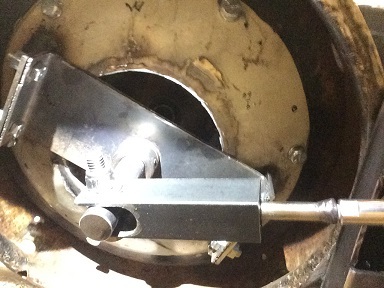
Grate Motor:
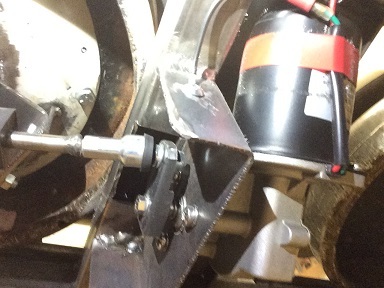
Side view:
Underside of grate:
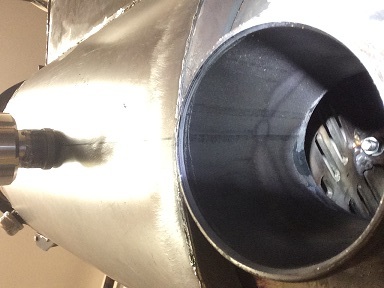
Filter candle:
Rear view:
Nice project you have made so far GregG.
On you sub-engine sizing the trick is too load down that engine so it WILL want to suck volume and negative pressure.
A 208cc electrical generator engine 2000+ watt electrically will volume pull much more than a running, unloaded 500cc engine.
And you will benefit from smaller chunk sizing your input wood.
Using a “fast” wood species/cut-portion too versus a “slow” wood species/cut-portion will make downsizing with small engines tolerable. Dry fast energy releasing sap-wood versus slow energy releasing heart-wood. Conifer wood versus a true hardwood.
Your after blower valving seem to be set up for your intended split blower and engine simultaneous operating?
Strongly advise you skip trying this with a single cylinder engine.
The blower sucks continuously. Will suck much better with as large, and straight outlet pathway as you can give it.
The engine sucks/pulls in short gulps. Doing no gasifier pulling most of the time percentage. "Wait, wait, wait, one short gulp-suck . . . then wait (compression stroke), wait (power stroke), wait (exhaust stroke) again until, the next single intake stroke-gulp.
These two systems will pressure waves conflict. And really, really screws with getting a balanced mix continuously into the engine cylinder!
Ha! And gas reservoir damping work-arounds; and one way flow check valves; have the tendency on engine sudden unloading (someone tuns off the electrical loading/gear shifting) to back pulse backward and one itty bitty tiny hot char pulse sucked engine side, or gasifier side to spark ignite and go BOOM.
On your before carb, or air cleaner box substitute mixer; you will have to NOT port back in the factory crankcase ventilator tube. Just let this tube out to atmosphere with a gauze screen on the end. Crankcase “false air” pulses will drive you nuts.
You wanna’ get going soon with out even more projecting, just buy a bag of “cowboy” “natural hardwood” grilling charcoal and smash size it down inside cloths, screening out the crushed fines.
Regards
tree-farmer Steve unruh
Howdy Steve,
I’ve been curious about the engine side… Have you ever tried an Anti-Reversion Header/Exhaust?
I’ve never tried these… There was some hoopla in the past. With varying levels of success… I have considered using several cones to emulate Tesla’s Valvular conduit… A sort of Air/Gaseous Diode
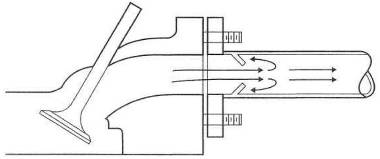
Could Tesla’s Valvular conduit might dampen the pulse somewhat?
Just a thought.
TerryL
To raise compression you can lap the head and block mating surfaces and install without a gasket. Lap head and block on plate glass with valve grinding compound and use a tiny amount of gasket sealer between when bolting together. I found this suggestion from a guy who has done this on many engines without failure.
We have done that a lot to our 50ccm 2 stroke mopeds. On the moped l converted to charcoal l ground the head down about 2mm, wich gives a theoretical compression ratio of 13.5/1. It run great on chargas.
